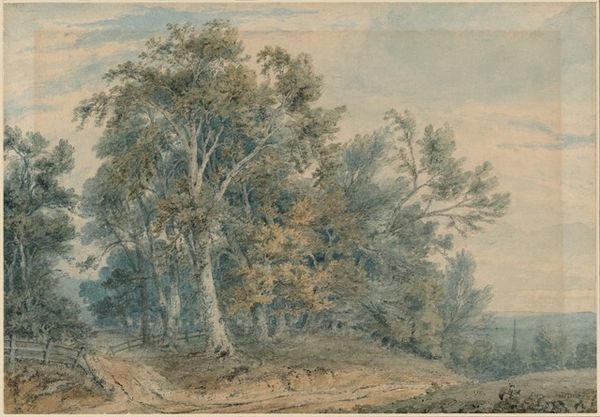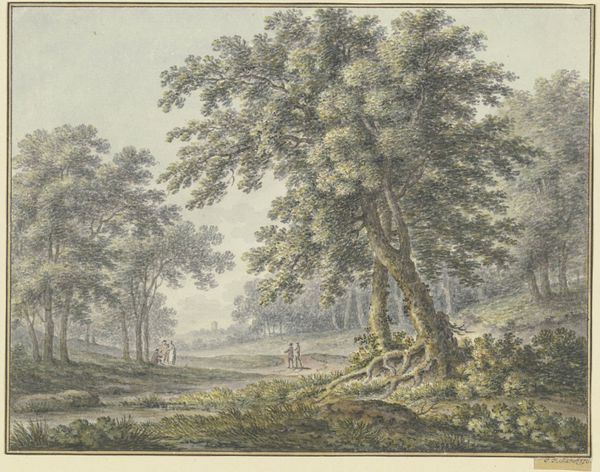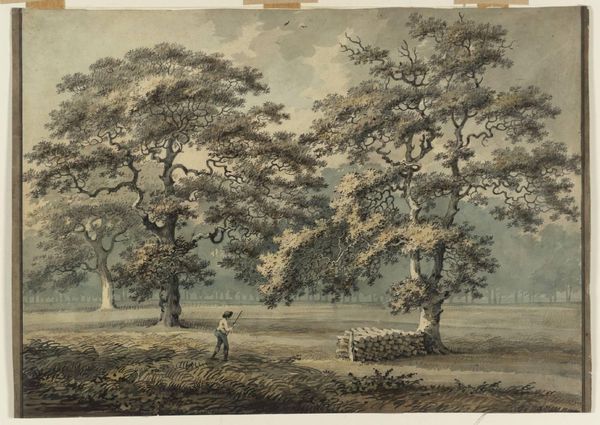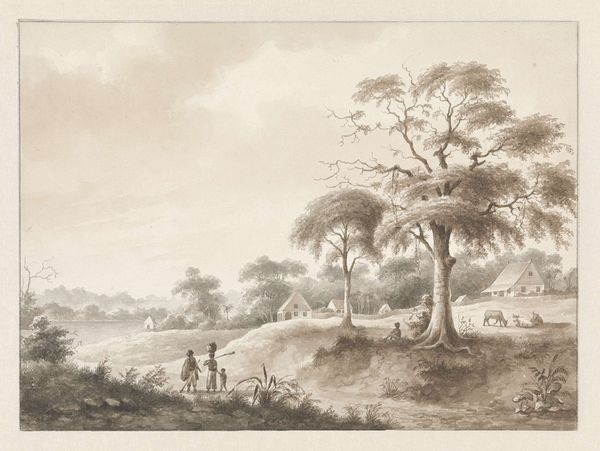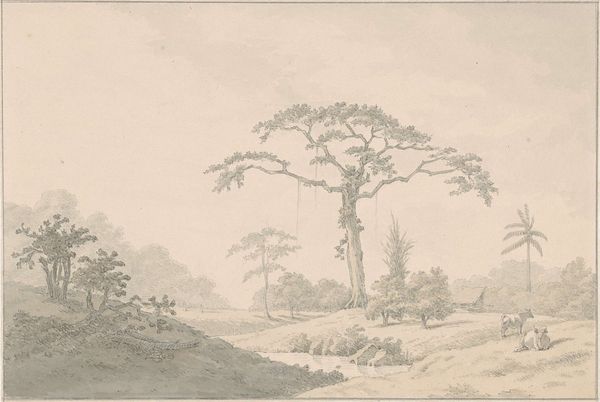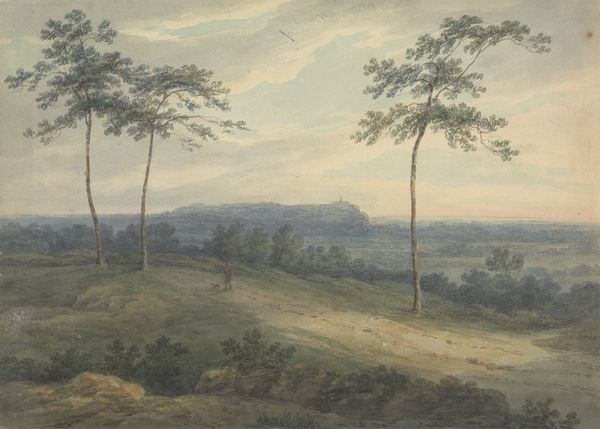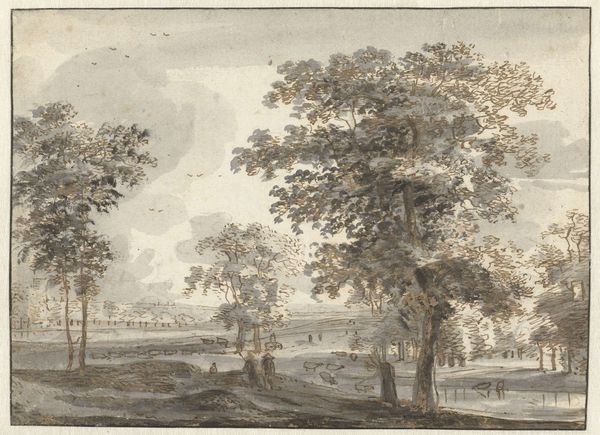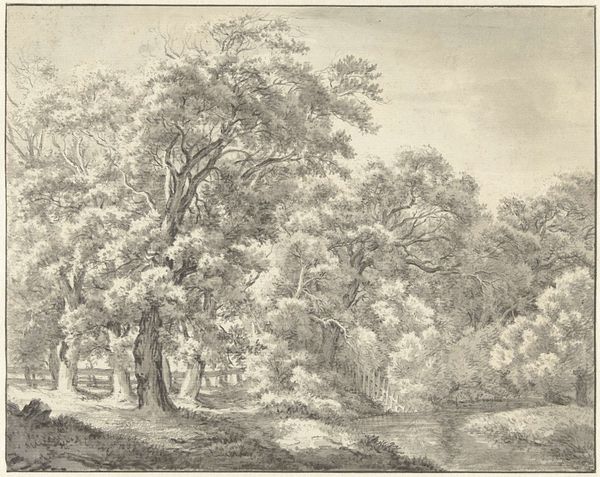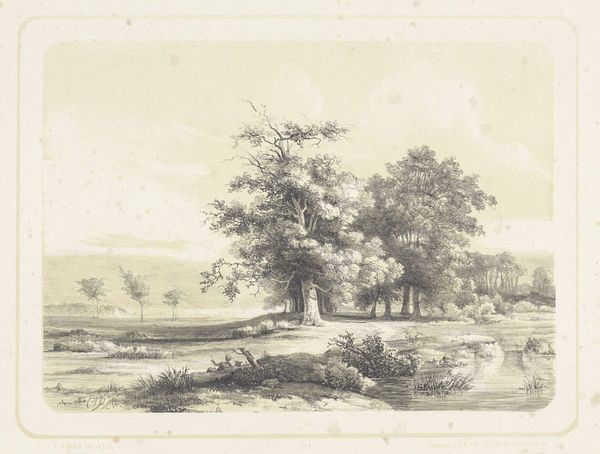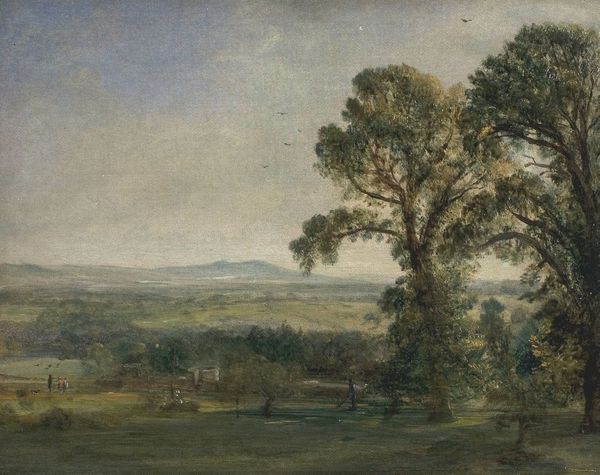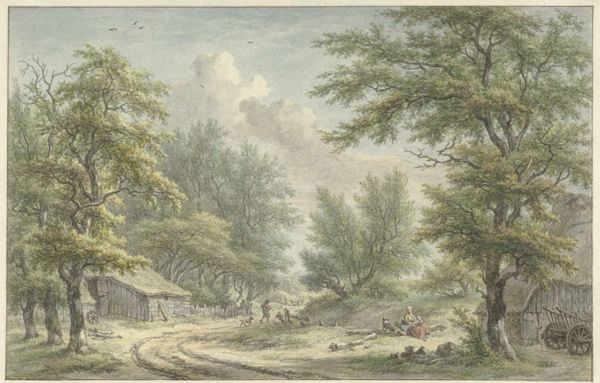
drawing, watercolor, pencil
#
drawing
#
pencil sketch
#
landscape
#
watercolor
#
romanticism
#
pencil
#
watercolour illustration
#
watercolor
Copyright: Public Domain: Artvee
Editor: This is Joseph Mallord William Turner's "Landscape with Trees and Figures," dating to about 1796. It's a watercolor and pencil drawing, and the colors are incredibly muted. What do you see in this piece? Curator: I see a landscape pregnant with symbolism. The tree, centrally positioned, acts as an axis mundi, connecting the earthly and spiritual realms. The figures, rendered almost as afterthoughts in the distance, seem dwarfed by the natural world. This reflects Romanticism's emphasis on the power of nature and humanity's relative insignificance within it. Do you notice how the clouds echo the form of the tree, creating a visual rhyme? Editor: Yes, I see that now! So, is the tree meant to represent something specific? Curator: Trees often symbolize growth, stability, and interconnectedness. In Turner's time, and still today, they can be seen as symbols of the British countryside, a cultural anchor. He likely selected it intentionally. How does the composition make you feel? Editor: A little melancholic, maybe? The figures seem isolated. Curator: Exactly! That feeling connects to a broader cultural anxiety of the late 18th century. Turner uses symbols to evoke emotions linked to the landscape and nationhood. Consider the enduring symbolic weight of a national Oak tree, or a monument made from a particular stone, from a specific site; cultural memory resides within those symbols. Editor: That makes me look at landscape art in a whole new light! Thanks! Curator: My pleasure! Paying attention to symbols can give you fresh perspectives on Turner and the Romantics!
Comments
No comments
Be the first to comment and join the conversation on the ultimate creative platform.
